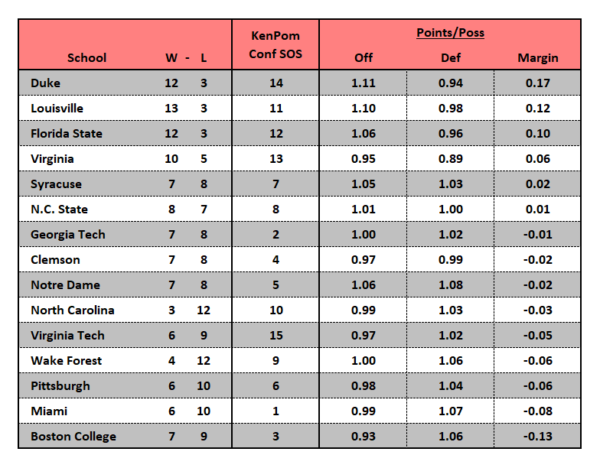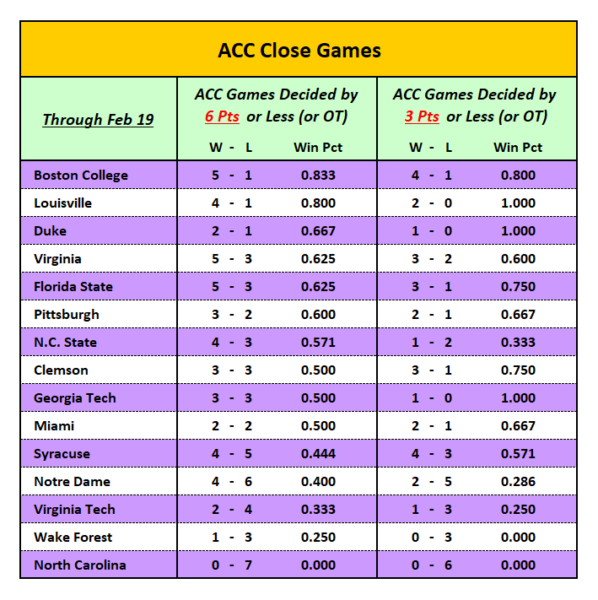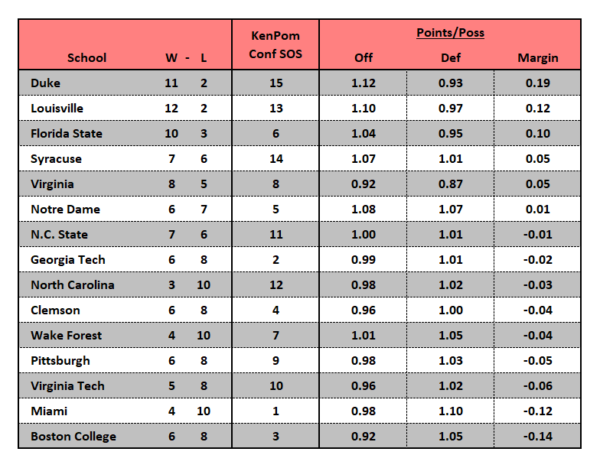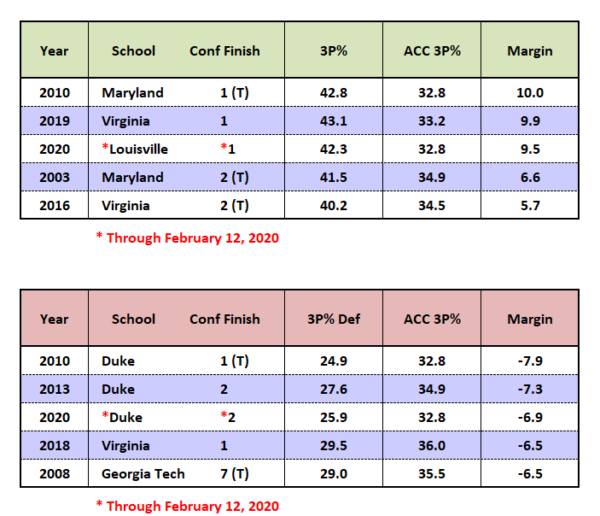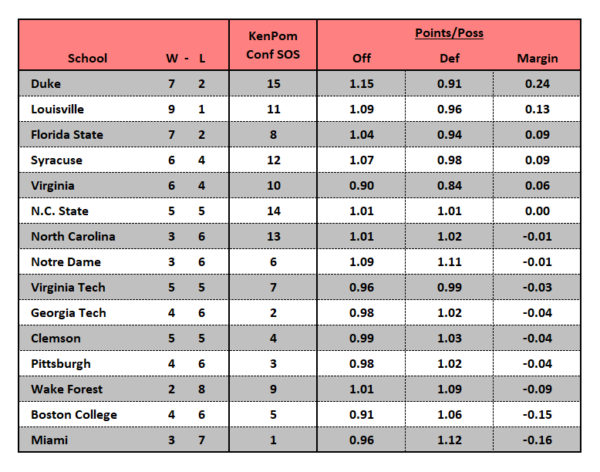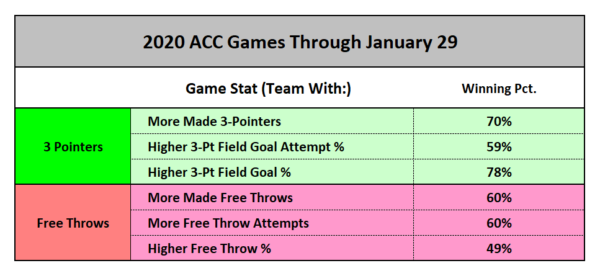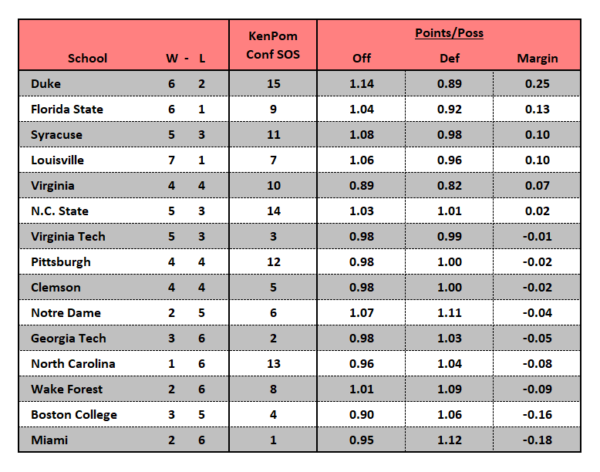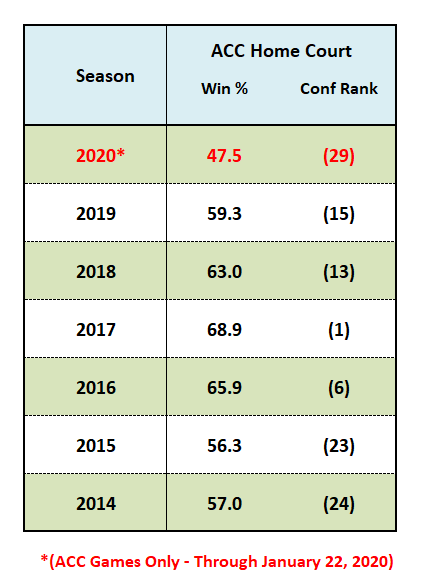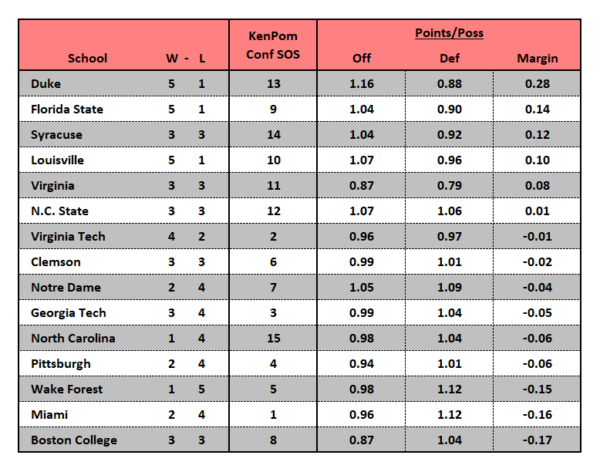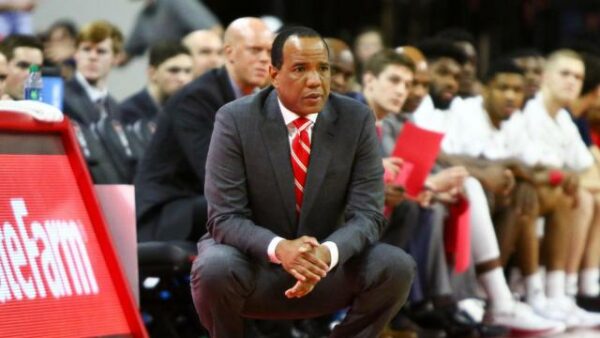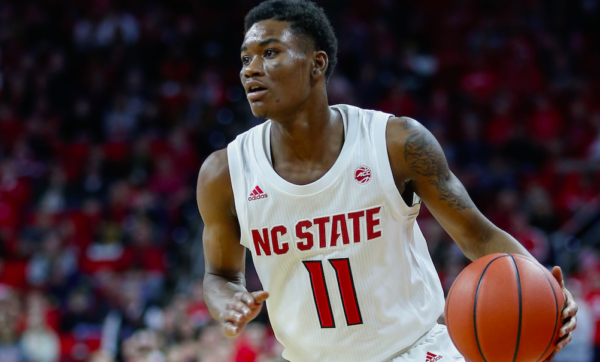Inside the ACC Numbers: Volume VII
Posted by Brad Jenkins on February 28th, 2020Here is this week’s edition of our weekly view at the current ACC standings with a focus on which teams are playing better or worse than their conference records may indicate. We will also delve into some advanced metrics to share a few interesting notes on teams, statistics and trends around the conference. This week, we examine how transfers from low/mid-major programs are adjusting to life in the ACC. Finally, we will forecast how the final ACC standings may look given current efficiency margins, and what that may mean for teams’ ultimate postseason aspirations.
Note: All numbers are current for games played through Wednesday, February 26.
Current Standings
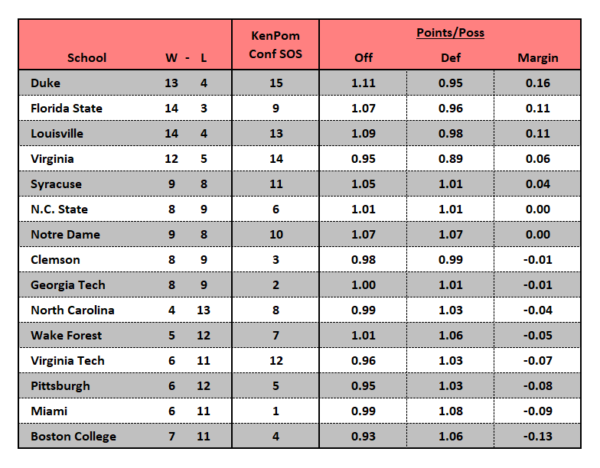
Duke’s lead in points per possession margin is almost entirely built upon its play at home. The Blue Devils are outscoring visiting ACC squads in Durham by 0.294 points per possession, yet they only have a 0.049 PPP edge on the road. That gap (.245) is by far the largest in the ACC. The only two league teams that have performed better on the road than at home are Georgia Tech and Syracuse. The Orange have a 0.06 PPM advantage when they are travelling – fueled by the conference’s best road offense that scores 1.07 points per possession.
Advanced Statistic of the Week: Out of Their League?
We see it every spring now. Many graduate transfers and undergraduate waiver transfers from lower level programs make the leap to major conference schools that are looking for immediate help. In that situation, it’s difficult to predict how the jump in competition will affect production for these players. In the current season, the ACC has nine transfers that played at low/mid-major schools last year. Let’s see how they have adjusted to life in a power conference.
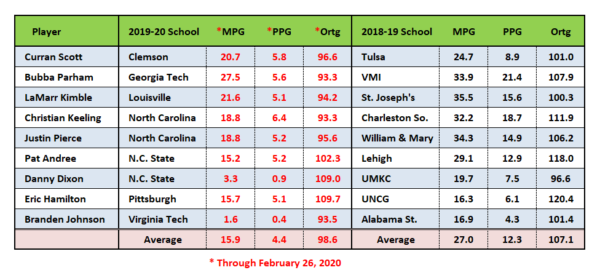
The chart above shows some key statistics for the nine transfers that made the jump to the ACC this season, after playing for a non-Power Six school a year ago. Across the board, offensive production is way down for this group, including an offensive rating decline of 8.5 points. The only two players on the list who are performing close to last season’s level are Curran Scott (Clemson) and Eric Hamilton (Pittsburgh). Among the five double-digit scorers from last year, they are collectively scoring 12 fewer points per game. Much of North Carolina’s nightmare season can be blamed on the many injuries that Roy Williams’ squad has endured, but it certainly hasn’t helped that the Tar Heels’ two graduate transfers – Christian Keeling and Justin Pierce – have failed to meet expectations. Perhaps this is just a bad year for transfers in the ACC, but we should keep these numbers in mind when the next batch of graduate transfers try to prove they belong with the big boys. Most probably don’t.
Future Forecast
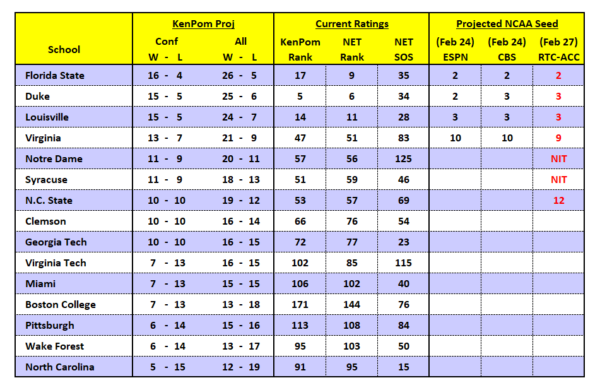
The above table shows predicted order of finish with final regular season records based on KenPom’s current win probabilities for each team. Also included are a few comparative rankings that are mentioned frequently when evaluating NCAA Tournament potential, as well as projections from two bracketology experts — ESPN‘s Joe Lunardi and CBS Sports‘ Jerry Palm. Note that while they project the field as if it was to be named tomorrow, we make our projections based on the final KenPom projected records. In a normal season, a team like Notre Dame — projected to finish above .500 in the ACC with 20 overall wins — would be an NCAA Tournament lock. But that is not currently the case and here’s why. The Irish are sitting on a 3-9 record against combined Quadrant 1/2 opponents, which includes an unimpressive 1-6 mark in Quad 1 opportunities. But there’s still a glimmer of hope for Mike Brey‘s team, some within their control and some that is not. The first order of business is obviously to win games and the Irish could pick up some quality wins between now and Selection Sunday — they host Florida State next week and the ACC Tournament after that. Notre Dame could also get some help if Indiana (NET #52), Clemson (#76) and Georgia Tech (#77) do enough to improve their final NET rankings. If all three can, suddenly the Irish would get credit for three more Quad 1 victories, since Notre Dame beat Indiana on a neutral floor and claimed road victories against the Tigers and the Yellow Jackets. It’s a long shot, but the NCAA door is still slightly open for the Fighting Irish.





























